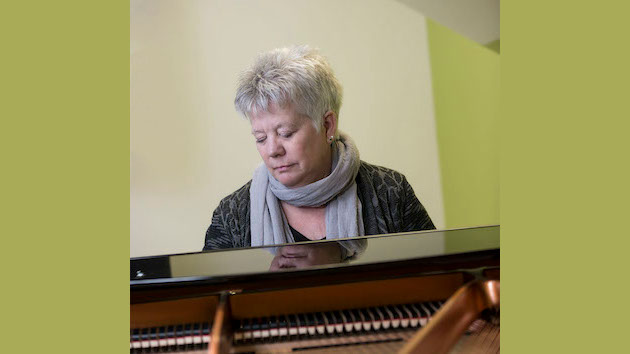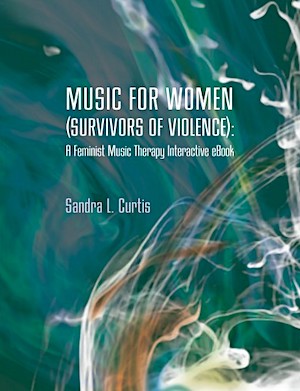
In her practice as a music therapist and a new, interactive e-book from Barcelona Press, Music for Women (Survivors of Violence), author Sandra L. Curtis offers an invaluable resource to women survivors of violence and to health professionals aiding their recovery. Although the majority of the book’s readers and Curtis’s clients are undoubtedly women, it’s impossible to imagine a man who would not benefit from reading the book.

Curtis, a board-certified therapist and musician, earned a bachelor’s degree in music from McGill University, an M.A. in Music Therapy from Florida State University, and holds a Ph.D. in Interdisciplinary Studies, Music Therapy, and Feminist Therapy from Concordia University.
Tapping into the book’s 10 chapters, Curtis clearly aims at transformation for all humanity — not restricting the information’s usefulness to women or individual self-help seekers. Centered in the crosshairs of feminism and violence against women there is urgency in a broader goal: causing actual societal change in societies and cultures that have long denied women’s health, well-being, self-esteem, power, centrality, and enlightenment. That point made repeatedly and backed by Curtis’ deep, evidence-based research and expertise arrives in seven considerable and comprehensive chapters on gender, the 65-year history of the music-therapy profession, and related topics. Following are chapters with a practical, eight-session, step-by-step program outlining detailed lesson plans that include song listening, lyric analysis, improvisation exercises, related readings, songwriting, and recording. It also provides links to over 200 annotated popular music songs and videos in a wide variety of genres that support women’s healing and empowerment.
The book’s architecture allows choices: to read consecutively or jump to chapters covering individual interests, or, for more general therapists, guidelines for developing multidisciplinary/team collaborations that integrate music therapy for their clients. A final chapter reiterates the importance of music as not only a tool for recovery, but a means by which to challenge the status quo, raise awareness, bring peace and coalescence to political movements, and to celebrate the diversity and giftedness of less-heard voices.
Music for Women leaves in its wake lingering questions: Why market the book primarily to women — through title, promotion, and other messaging — when a broader audience is possible? Is this an inadvertent continuation of a mindset that labels societal flaws suffered primarily by women as “women’s problems” and therefore not important for everyone to address? I don’t know, but I’m left to wonder whether men will read this book (I hope they will) and join with women to make change happen. Also, some readers may wish classical, opera, and new music written by contemporary composers to satisfy her “popular now” mandate had been included in the playlist.
Curtis’s approach that has women experience and research their pain, connect and embrace diversity within suffering, and step up in boldness to write their own music inspires future hope. When women and nonbinary-identifying composers and songwriters flourish alongside the voices of men, our language grows richer, the stories we tell expand, and humanity in its entirety is expressed through music.




